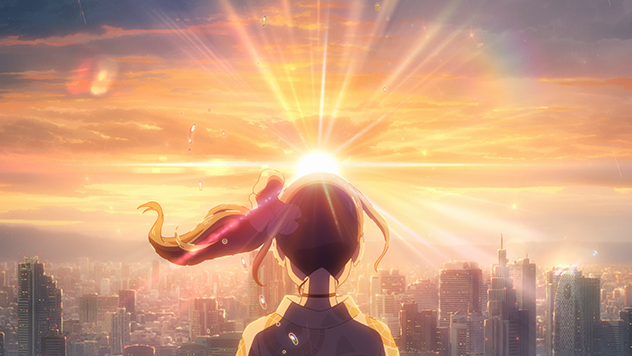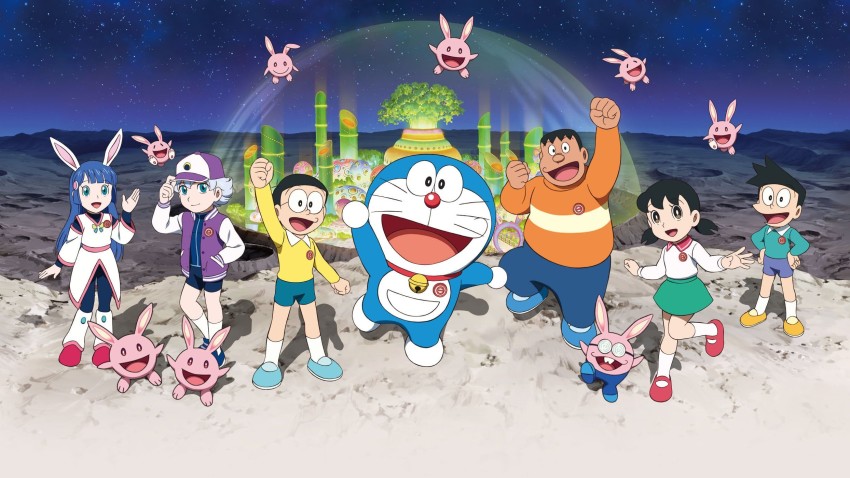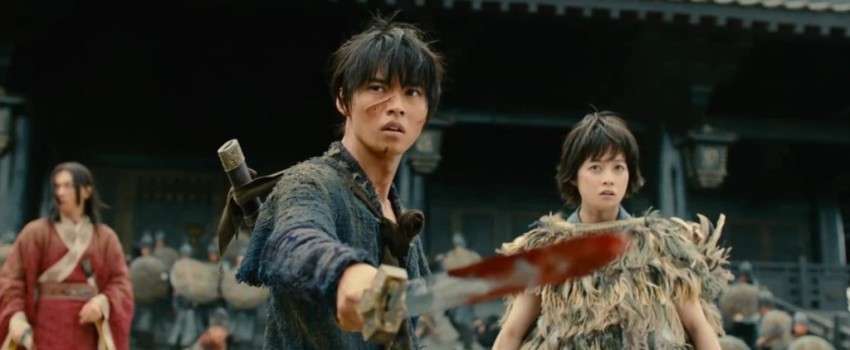Japanese Box Office in 2019
January 29, 2020 · 0 comments
By Jasper Sharp.
 As is customary, the Motion Picture Producers Association of Japan, or Eiren, has just released figures for the previous year’s box office, presenting the opportunity to consider the current state of Japanese cinema as an industry, if not as an art.
As is customary, the Motion Picture Producers Association of Japan, or Eiren, has just released figures for the previous year’s box office, presenting the opportunity to consider the current state of Japanese cinema as an industry, if not as an art.
There is some cause for celebration on this first score, at least. As various industry commentators have noted, such as Mark Schilling for Variety and Gavin Blair for The Hollywood Reporter, in 2019 overall admissions reached their highest point in 20 years. The 194,910,000 tickets sold represent a 15% rise on 2018, and a rather impressive 44% growth since the year 2000. It is, in fact, the highest number since 1971. As the average ticket price has crawled up 25 yen to 1,340 yen in the last year, the overall revenues of the industry have risen accordingly, with total receipts reaching a record-breaking 261,180 million yen, up 17.4% on the previous year.
Those proclaiming the demise of cinema as a social activity might well reflect on these statistics – the average Japanese person bought 1.5 cinema tickets last year, spending just over 2,000 yen at the box office. The question is, what exactly were they watching, and do we want to see it?
The 54.4% share of the box office for Japanese productions against the 45.6% share for foreign films remains consistent with that of what we might term “the post-Ghibli era” of the past five or six years. One dramatic exception was 2016, in which the massive smash of Makoto Shinkai’s Your Name tipped the balance to a record-breaking 63.1% of Japanese cinema-goers favouring the local product. Shinkai’s latest, Weathering with You, might not represent quite the same level of soar-away success with local audiences, taking 14.06 billion yen against the 23.56 billion yen of its predecessor, but at around the rough equivalent of £100 million, this is a respectable sum, beating off the foreign competition, with Frozen 2, the top-grossing foreign film, taking 12.79 billion yen (although admittedly the Disney film, released in late November and still playing in cinemas, has had less chance to prove itself in this year’s figures).
 I’m not sure we can get quite so excited about many of the other titles in the upper echelons of the domestic rankings. As has been the case for the past two decades, the top ten is cluttered with “non-auteurist” anime in the form of the annual instalments of franchises – Detective Conan the Movie: The Fist of Blue Sapphire sits smugly at number 2; One Piece: Stampede at number 4; Doraemon the Movie: Nobita’s Chronicle of the Moon Exploration at number 5; Dragon Ball Super: Broly at number 7; and Mewtwo Strikes Back Evolution at number 10. It is not like these films won’t find their audiences abroad, but none are likely to revolutionise overseas perceptions of anime or Japanese cinema in general. One Piece: Stampede, for example, is already poised for a UK theatrical release in February, but one can hardly imagine it taking the 5.55 billion yen it earned in Japan, equivalent to nearly £40 million, over here.
I’m not sure we can get quite so excited about many of the other titles in the upper echelons of the domestic rankings. As has been the case for the past two decades, the top ten is cluttered with “non-auteurist” anime in the form of the annual instalments of franchises – Detective Conan the Movie: The Fist of Blue Sapphire sits smugly at number 2; One Piece: Stampede at number 4; Doraemon the Movie: Nobita’s Chronicle of the Moon Exploration at number 5; Dragon Ball Super: Broly at number 7; and Mewtwo Strikes Back Evolution at number 10. It is not like these films won’t find their audiences abroad, but none are likely to revolutionise overseas perceptions of anime or Japanese cinema in general. One Piece: Stampede, for example, is already poised for a UK theatrical release in February, but one can hardly imagine it taking the 5.55 billion yen it earned in Japan, equivalent to nearly £40 million, over here.
One interesting observation that can be made about these anime titles is that the 9.37 billion yen revenues of this latest Detective Conan movie is on a par with the 9.18 billion yen taken by the 2018 instalment, and up from the 6.89 billion yen of the character’s one before that, which topped the domestic top ten of 2017. Similarly, a Doraemon movie has brought in around 4 or 5 billion yen almost every year of this past decade; and the Pokémon, Dragon Ball and One Piece excursions on the big screen have proven similarly reliable cash-cows, which suggests that the growth in admissions for local films can be largely attributable to the family or kids market. We might also note the abiding pattern that seven out of the top ten titles were distributed by Toho.
The sparse selection of live-action films among the top-grossers include Kingdom at number 3, a historical action adventure directed by Shinsuke Sato, produced by Sony Pictures Japan and based on a manga series set in ancient China, presumably in recognition of the Japan’s most lucrative export market. At number 6 is Masquerade Hotel, a comedy murder mystery directed by Masayuki Suzuki with acting talent and financing provided by Fuji TV. At 8 we have Hideki Takeuchi’s comedy manga adaptation of Fly me to the Saitama, while just below it at 9 is Hit Me Anyone One More Time, a slapstick social satire directed by stalwart comedy writer-director Koki Mitani (The University of Laughs, The Magic Hour).
 As for the imported hits, the top ten most lucrative titles of 2019 were pretty similar to the UK’s last year. The top four grossers are either sequels to or live-action versions of popular animated films: Frozen II at number 1; Aladdin at number 2; Toy Story 4 at 3; The Lion King at 4; and, as a reminder of the enduring popularity of Harry Potter in Japan, Fantastic Beasts: The Crimes of Grindelwald at 5. The presence of Avengers: Endgame at number 6, Spider-Man: Far From Home at 9, and dare we mention Joker at 7, also point to cinematic consumption habits that favour familiar characters and established product lines.
As for the imported hits, the top ten most lucrative titles of 2019 were pretty similar to the UK’s last year. The top four grossers are either sequels to or live-action versions of popular animated films: Frozen II at number 1; Aladdin at number 2; Toy Story 4 at 3; The Lion King at 4; and, as a reminder of the enduring popularity of Harry Potter in Japan, Fantastic Beasts: The Crimes of Grindelwald at 5. The presence of Avengers: Endgame at number 6, Spider-Man: Far From Home at 9, and dare we mention Joker at 7, also point to cinematic consumption habits that favour familiar characters and established product lines.
But is this really the case? While the total amount earned by the top-ten titles in both domestic and imported productions was higher than in 2018, this doesn’t alone account for this 17.4% rise in overall box office revenues.
One figure that dramatically springs out from the Eiren stats is the overall number of films released. A total of 1,278 releases (689 Japanese productions and 589 foreign) might seem not such a significant increase on the 1192 of 2018, although one should note that it is the local productions that are most attributable for this swell. Nevertheless, it is almost double that of the 644 overall releases of 2000, while a decade ago, in 2010, there were still just 716. Let us consider that prior to the new millennium, the peak year for releases was 1961, when 764 new films hit Japanese screens, of which 535 (over two-thirds), were locally produced. This was the year when Japan’s rival film producers went into overdrive, cranking out a relentless cycle of films to counter the threat of television before the studio system crashed at the end of the decade.
The distribution landscape has changed dramatically since the vertically-integrated system of the 1950s and 60s, when the studios produced and exhibited their films in their own cinemas – although one might argue that Toho still operates on this model to a certain degree. The real rise in release figures came around 2011-2012, the year when Japan’s exhibition sector, as with the rest of the world, began converting to digital projection.
Since then, there has not been a particularly dramatic shift from the number of screens in the country, with 3,339 in 2011 rising slowly to 3,583 in 2019, the bulk of which contained within multiplexes. Even accounting for the presence of live-streamed events such as theatre and music performances referred to in Japan under the catch-all category of as ‘other digital stuff’ (ODS), or one-off screenings of independent titles, it seems clear that there are an awful lot of films coming out that cannot be spending very much time in Japanese cinemas.
It seems a sad situation inasmuch as it leaves little opportunity for smaller or even mid-budgeted releases to establish themselves as sleeper hits within a distribution landscape dominated by big fish like Toho. The freak breakout hit of One Cut of the Dead in 2018 suggests such a thing is possible, but whether this kind of success is likely to be replicated is another matter.
 It is also worth noting that a number of the titles in this year’s top ten have made the critics’ picks in Japan, with the Blue Ribbon Awards giving the nod to Fly Me to Saitama, Weathering with You, Kingdom (pictured), Masquerade Hotel, and Hit Me Anyone One More Time. However, while the sole animated title has gone out on general release in the UK to positive reviews, the live-action films have caused fewer ripples internationally.
It is also worth noting that a number of the titles in this year’s top ten have made the critics’ picks in Japan, with the Blue Ribbon Awards giving the nod to Fly Me to Saitama, Weathering with You, Kingdom (pictured), Masquerade Hotel, and Hit Me Anyone One More Time. However, while the sole animated title has gone out on general release in the UK to positive reviews, the live-action films have caused fewer ripples internationally.
At the same time, Japanese content is more instantly available than it ever was in the UK, thanks to new distribution channels like Netflix, who gave us, among other things, the comedy TV show The Naked Director about porn pioneer Toru Muranishi. We are certainly not starved of Japanese cultural products in the same way we might have been in the past. They are just reaching us in a rather different form.
In this respect, it is an interesting to compare the situation with 2018, in which Hirokazu Kore-eda’s Shoplifters was simultaneously garlanded with a Palme d’Or at Cannes and became the fourth best-grossing domestic production of the year. Pulling off the impressive feat of being commercially popular at home and critically regarded internationally, the director was rewarded with a retrospective at the British Film Institute in Spring 2019.
One could see Shoplifters as the culmination of many of the director’s ideas about the changing nature of the Japanese family and society across the years of the Heisei Era, and with this three-decade period of the nation’s history itself coming to an end on 30 April 2019 with the abdication Emperor Akihito, it is interesting that Kore’eda himself opted for a complete change in tack, directing his first feature outside of Japan, with the French co-production of The Truth starring Catherine Deneuve, Juliette Binoche and Ethan Hawke. This new film was released in Japan in October 2019, and yet doesn’t figure anywhere within Japan’s top 40 grossers of the year, yet alone its top 10. It will be released in the UK on 20th March.
In conclusion, Japan’s new peak in cinema attendances is remarkable when one considers discussions of the domestic industry as being on its last legs at the beginning of the Heisei period in 1989, and it is certainly something to be celebrated. There are few countries in the world where cinema-going is on the rise and audiences are favouring the local product over the foreign ones.
One might be concerned that the crowd-pleasers are crowding out the visibility of a more diverse selection of homegrown cinema. Japan is hardly alone in that respect. Nevertheless, the sheer volume of homegrown releases making it to local screens certainly suggests that at least that a degree of diversity is there, whether we get to sample it outside of Japan or not. In the meantime, it is going to be interesting to see how Japanese cinema adapts to the changing industrial, technological and social changes that are sure to accompany the new Reiwa era. Exciting times lies ahead. Perhaps.
Jasper Sharp is the author of The Historical Dictionary of Japanese Cinema.
Leave a Reply